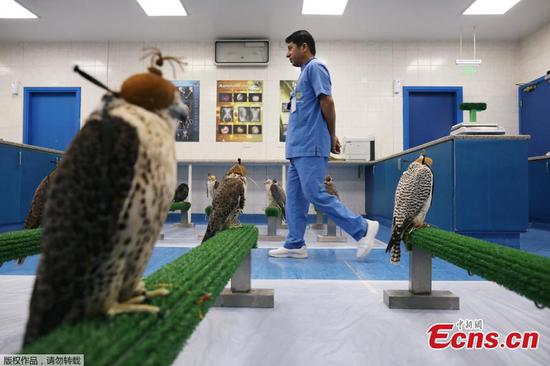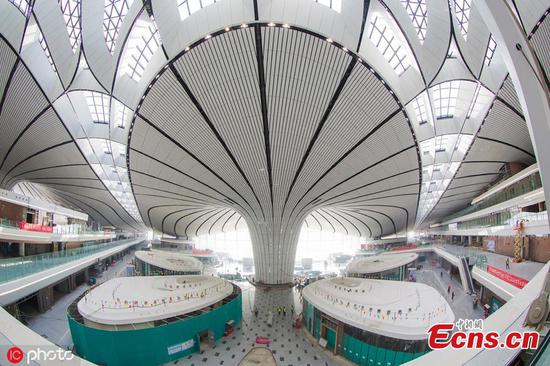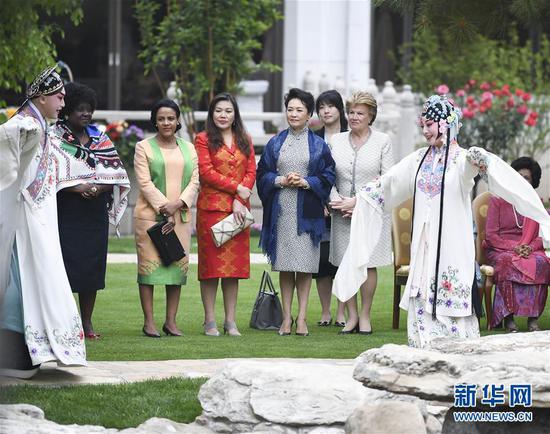China will finance vocational training with 100 billion yuan (about 14.8 billion U.S. dollars) from the country's unemployment insurance fund balance to upskill the workforce, according to an executive meeting of the State Council.
The meeting presided over by Premier Li Keqiang Tuesday decided that a special capital account will be established to advance the task of vocational skills upgrading.
Utilization of the fund will be tracked and relevant information will be disclosed to the public, while those who fake training to fraudulently obtain the fund will be punished in line with laws, the meeting noted.
The adjustments of vocational training subsidy policies by local governments will be supported, and all eligible workers can take skill-training programs and receive subsidies, said the meeting.
Vocational schools are encouraged to expand their training to cover more people, while companies and social training agencies will be given support for launching training courses on professional skills.
Privately-run training institutions shall enjoy the same treatment as their public counterparts do when it comes to government-purchased services.
Training quality must be ensured to improve the pertinence and effectiveness of vocational skill-upgrading programs, the meeting stressed.
Under a large-scale training plan, 50 million people will receive vocational skill training within the next three years, with 15 million to be trained this year.
The training will mainly target employees and accommodate the needs of key employment groups and poverty-stricken workers. Support will be granted to small and micro firms to help them stage on-the-job training and upskill the needy workers awaiting job transfer.
Employees in high-risk industries should get more training in workplace safety techniques.
The meeting also discussed and approved a plan to expand the enrollment of higher vocational colleges by 1 million this year to accelerate the training of personnel with diverse technical skills.
Priorities of the enlargement will go to high-quality vocational schools, sectors where skilled workers are in dire shortage and poverty-stricken regions, it said.
Schools on the east coast are encouraged to enroll more students from less developed central and western regions. Special enrollment plans will be made for veterans, laidoffs, migrant workers and new types of skilled farmers.
The meeting noted that enrollment will be further expanded to meet the growing demand for skilled workers in such sectors as pre-school education, nursing, housekeeping, old-age care and other modern services.
Higher vocational schools may adopt a flexible education system and use various kinds of training means to ensure training quality. Graduates of higher vocational schools enjoy the same treatment as college graduates do in seeking urban residency, jobs and career development, it said.
The meeting said achieving relatively full employment is necessary to have the Chinese economy expand within a reasonable range this year.
Large-scale vocational training and enrollment enlargement in higher vocational schools are key measures to stabilize employment and optimize employment structure, which provides significant support to China's economic restructuring and upgrading as well as high-quality development, it said.
Adopting an "employment first" policy in macroeconomic adjustment, China has planned to create more than 11 million new urban jobs in 2019 and ensure around a 5.5 percent surveyed unemployment rate and a registered unemployment rate below 4.5 percent.
To meet the targets, policymakers have taken steps to alleviate company burdens, cut taxes and fees and lower the share borne by employers for the basic aged-care insurance of urban workers.
In particular, small and medium-sized businesses were among the top beneficiaries of favorable measures such as loan increase and tax cuts.
The Chinese economy expanded 6.4 percent year on year in the first quarter, much better than expected, with GDP reaching 21.343 trillion yuan. The growth target for 2019 was set at 6 to 6.5 percent.


















































